
Nov 27,2023 by July
Story of Trabricks
From Shop Owner to Diamond Painting Enthusiast
I'm delighted that you've come across this. My name is July. I wear two hats — one as a manufacturer of diamond paintings and the other as an enthusiast of the craft. These two roles seamlessly coexist because, when I meticulously place each dot, my mind becomes wholly absorbed in the process, bringing me a sense of tranquility. This, in turn, allows me to rejuvenate and restore my energy.
For me, diamond painting isn't merely a business endeavor for financial gains or a means of livelihood. More importantly, creating a high-quality kit that is appreciated and recognized by customers brings me immense satisfaction and a profound sense of accomplishment.
I've been part of the diamond painting industry for six years and have witnessed its continual evolution and transformation. Diamond painting enthusiasts now have a plethora of tools at their disposal, such as resin diamond painting pens, putty, 3D printed trays, tray towers, canvas magnets, forever tips, LED pads, etc. These tools bring immense comfort and convenience to diamond painting lovers. I, too, have benefited from these tools.
However, one issue that has persistently occupied my thoughts, and for which a solution has proven elusive, is the inconvenience and time-consuming nature of repeatedly transferring diamonds from one container to another while indulging in diamond painting.
The Spark of Innovation: Creating Trabricks
I have two cats—one is the father cat, and the other is his son. The inspiration behind the name of the store 'Cateared' comes from the father cat's ears. The male cat is highly energetic and enjoys playful chasing and sparring. These feline companions often engage in parkour games, leaping onto chairs, beds, desks, and even joining me during my diamond painting sessions. Sometimes, chaos ensues, akin to a bull in a china shop.
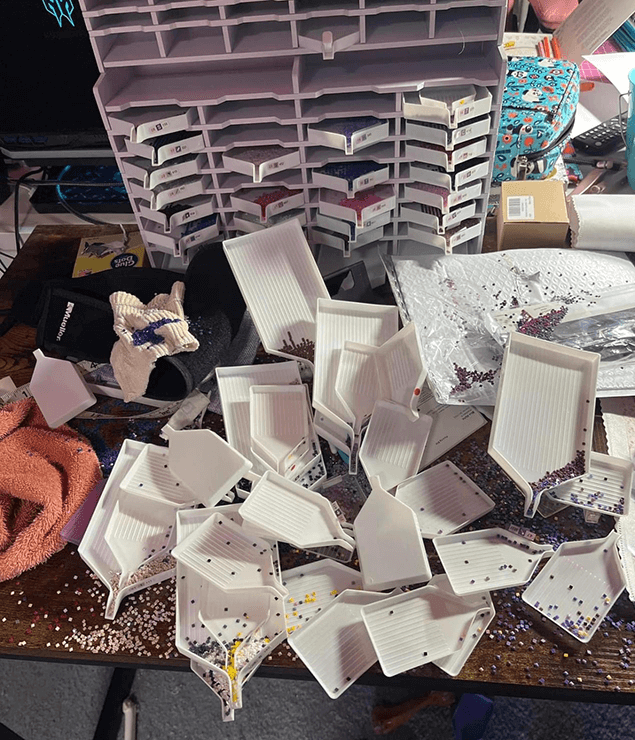
As you can see, it's a disaster for any diamond painting enthusiast. Hence, I deemed it necessary to introduce a lid for the diamond tray. With such a drilling tray, even if my cat knocks it over, the drills won't be scattered everywhere.
The Design Journey of Trabricks
So off I went, diving into the search for available bead sorting trays on the market. The initial results presented the usual diamond painting trays, sans caps, and not particularly budget-friendly.

This wasn't the outcome I had in mind, prompting a tweak in my search terms to something like "diamond painting tray with lid," revealing a new set of options.

True, these had covers, but the hitch was that the cover couldn't be securely affixed to the bottom, meaning drills could still spill out upon impact—far from meeting my expectations. Furthermore, they weren't travel-friendly, and the price point didn't align with my budget considerations.
Later, a fellow diamond painting enthusiast suggested exploring 3D printed diamond painting trays, hinting that they might align with my requirements. So, I resumed my search. This time, I discovered that the lids of 3D printed diamond painting trays could indeed be securely fixed, featuring deeper groove lines than standard diamond painting trays. This allowed users to shake it rapidly, facilitating a quicker and more organized arrangement of the drills.
However, the price tag of these trays gave me pause—nearly $10 for a small tray and $30 for a larger one. Granted, factoring in the costs of 3D printing, the pricing seemed reasonable. But as a devoted diamond painting enthusiast, I anticipated that extended use might lead to wear and tear in certain areas, compromising the stability of the cover.
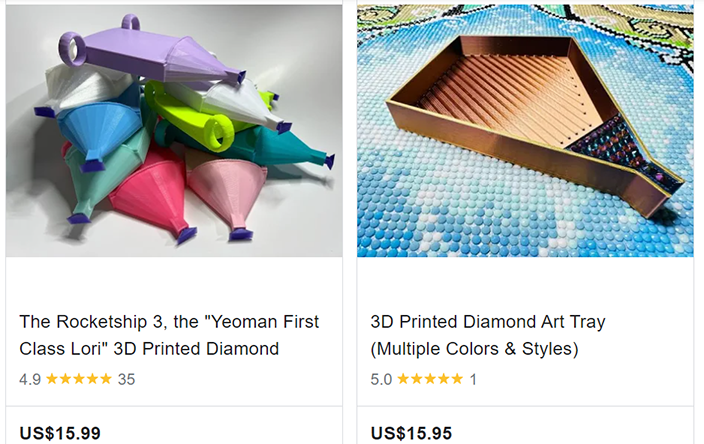
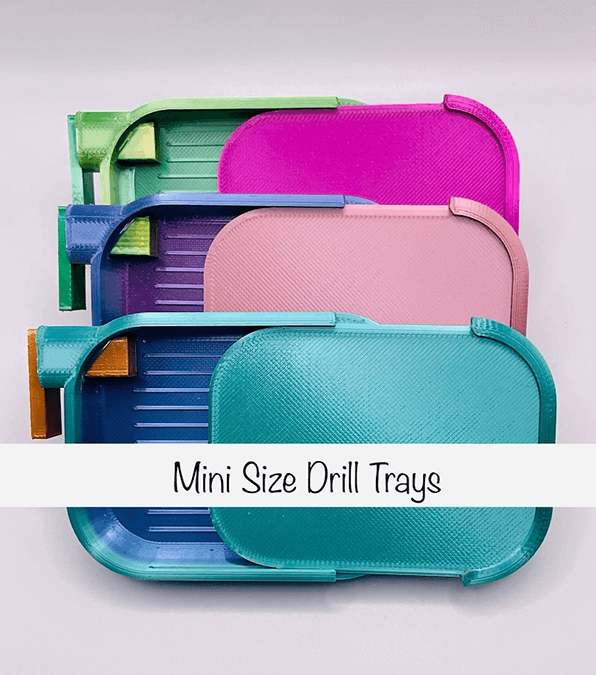
After extensive research and consultations on similar products, a concept for enhancing this product gradually took shape in my mind. The newly envisioned trays must meet the following four criteria:
1.The drilling tray should come equipped with a securely affixed cover, ensuring convenience for on-the-go usage. This design feature becomes especially handy in preventing spills, even if my cat inadvertently steps on it.
2.The spacing between the groove lines on the trays should be moderate, accommodating various drill types such as round drills, square drills, crystal round drills, and crystal square drills. This versatility is crucial as these drills come in slightly different sizes.
3.The product should be cost-effective, ensuring affordability for the majority of diamond painting enthusiasts.
4.Ideally, it should function as a convenient storage box that opens up for easy access to the drills. This way, I can bid farewell to the tedious process of flipping drills between jars and the drill tray every time.
I attempt to translate the ideas swirling in my mind into design drawings. This process encountered a few bumps, leading to multiple revisions.
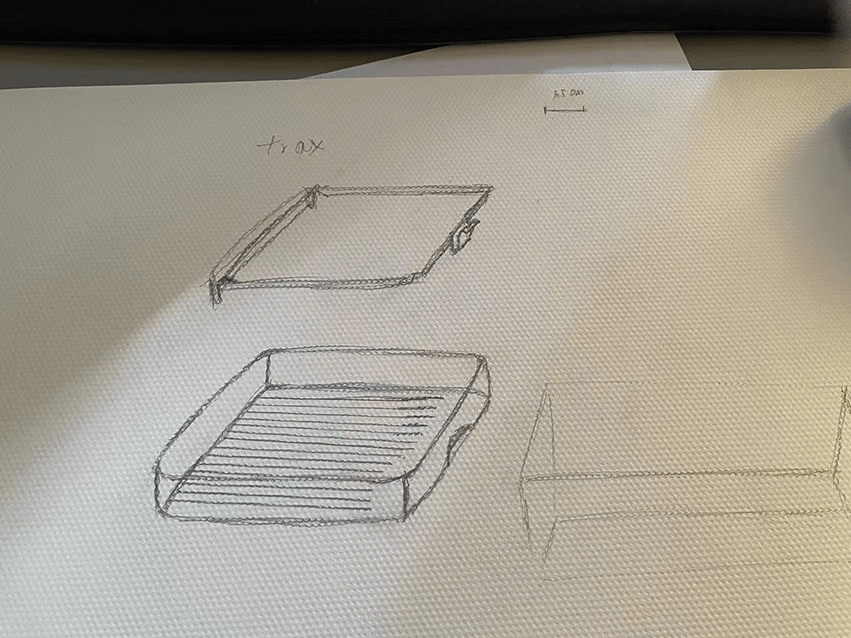

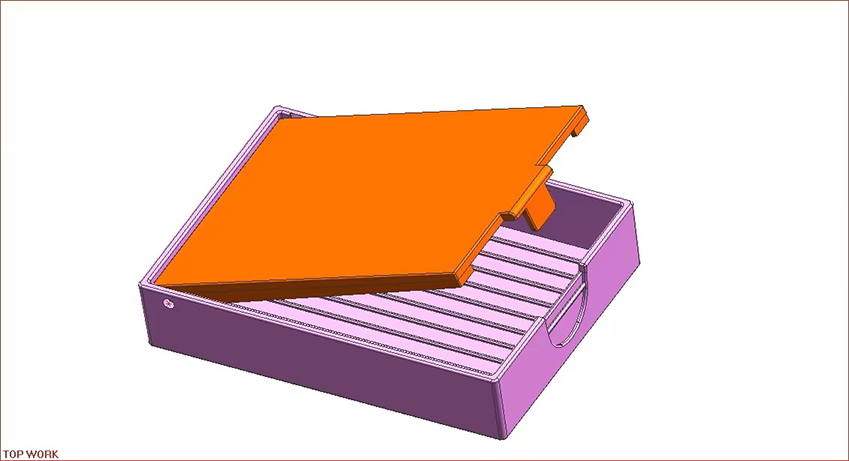
After several months dedicated to prototyping and rigorous testing, we successfully unveiled the first generation of Trabricks.
Crafting the Perfect Trabricks
Admittedly, this product isn't flawless. One notable omission is that I don't want to pour drills out of it again, which resulted in the absence of a spout. My vision was to create a versatile container that serves well as a diamond painting trays, a functionality that suffices for my needs. If you possess any valuable suggestions, kindly follow our Facebook page and drop me a message. Who knows, we might seize an opportunity to collaboratively design the perfect product for fellow diamond painting enthusiasts together.



